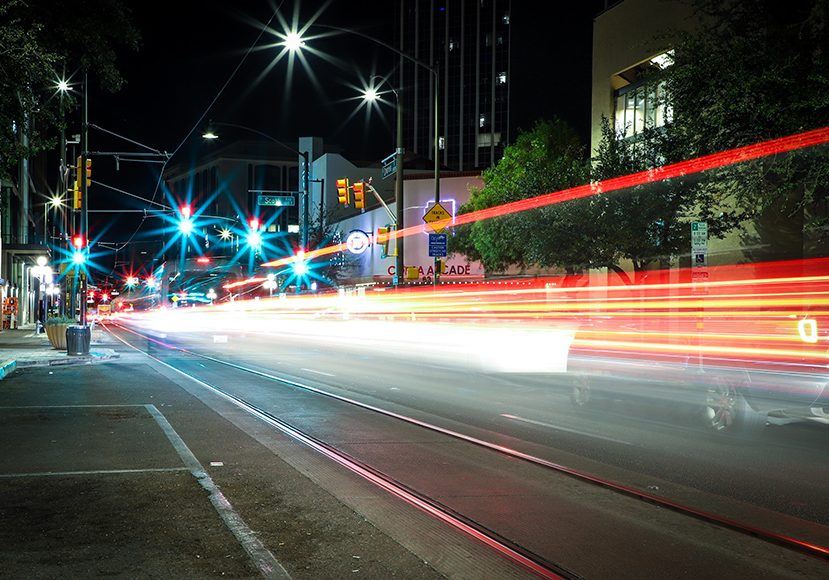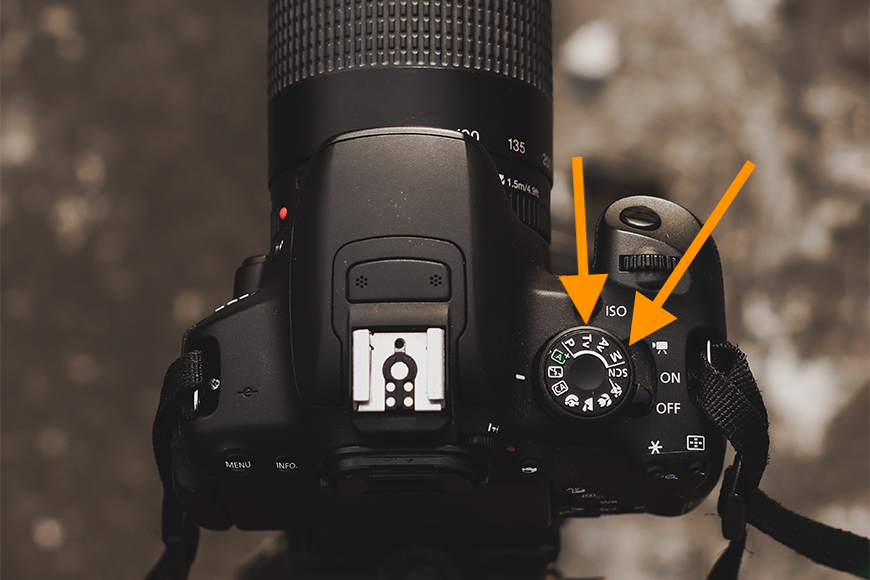
Frame Rate vs Shutter Speed (For Video & Photography)
In this easy-to-follow guide, learn about frame rate vs shutter speed and how to use them in your photography and videography.
Learn Filmmaking | Learn | By Jeff Collier
Frame rate vs shutter speed: what’s the difference?
If you’re wondering about these two terms and how they relate to each other, you’re not alone.
It can all seem a bit confusing at first, but this guide will help you get an understanding of what frame rate and shutter speed mean in the world of photography and videography.
We’ll look at what shutter speed and frame rate mean, why they’re important, and how they relate to each other.
So, dive in with me, and let’s demystify these crucial terms together.
Table of Contents
Understanding Frame Rate vs Shutter Speed
Before we dig into the relationship between frame rates and shutter speeds, let’s define these two terms.
What is Shutter Speed?
The shutter is a mechanism that opens and closes to let light hit the camera sensor. Its speed determines how long the sensor is exposed to that light.
Here’s an easy way to think of it. Imagine your camera is an eye. The shutter is like your eyelids, blinking open and closed. Shutter speed, then, is the speed at which these “eyelids” blink.
The longer the “eye” stays open, the more light gets in.
- Faster shutter speeds (like 1/1000s) let in less light, capturing a brief moment in time. They’re excellent for freezing fast-moving scenes – think of a bird in mid-flight or a splash of water. Another example – fast shutter speeds are best for sports photography.
- Slower shutter speeds (like 1s) allow more light in, giving moving objects that dreamy, blurred appearance. It’s perfect for showcasing motion, like flowing water or bustling city streets at night.
What is Frame Rate?
Think of watching a flipbook. Each page is an individual image, but when you flip through them rapidly, you see a moving picture. That’s how videos work, and frame rate is essentially the “flipping speed.”
So, frame rate, often measured in frames per second (fps), tells us how many individual images (or frames) are displayed in one second of video.
It’s crucial in determining how smooth or choppy a video will appear.
- Higher frame rates (like 60fps) deliver smoother videos. It’s why sports broadcasts often use them; you wouldn’t want to miss any part of that epic goal or jump, right?
- Lower frame rates (like 24fps) give a more cinematic, slightly choppier look. It’s no coincidence that most movies are shot at this frame rate – it feels more “film-like.”
Relationship Between Frame Rate and Shutter Speed
Ever watched a film and noticed how the motion blur of a running character felt just right? Or maybe a YouTube video where the motion felt too jarring or unnatural?
Much of this boils down to the interplay between frame rate and shutter speed. Let’s break it down.
The 180-Degree Rule
This is the golden rule of motion in videography. It suggests your shutter speed should be roughly double your frame rate.
So, if you’re shooting at 24fps, aim for a shutter speed of around 1/50s.
Why this ratio? It makes motion blur look natural to the human eye, mirroring what we’re used to seeing in real life and traditional films.
What Happens When You Break the Rule?
Faster Shutter Speeds: If your shutter speed is significantly faster than double your frame rate, motion begins to look choppy. It’s a style popularized by films like Saving Private Ryan to convey tension and urgency in battle scenes.
Slower Shutter Speeds: Venturing on this side, motion becomes dreamier with more blur. While it can feel surreal or even disorienting, it can be used artistically for certain moods or effects.

Changing the shutter speed is usually done via a control dial on your camera – in this case, Tv or M mode.
Finding the Balance
Sometimes, conditions won’t allow for the ideal shutter speed and frame rate combo (like in very bright or dark situations).
That’s when other tools, like neutral density filters or tweaking your ISO, come into play to maintain good exposure while achieving the desired motion look.
Equipment Limitations and Overrides
Not all cameras let you adjust both frame rate and shutter speed independently. Know your gear!
Some situations or artistic choices might demand you intentionally break the 180-degree rule. Rules in art, after all, are meant to be understood first and then creatively broken.
In essence, while frame rate and shutter speed are individual entities, their combined effect can make or break the visual appeal of a video.
As always, understanding the rules before you bend or break them is key to crafting compelling visual stories.
5 Tips for Beginners to Master Shutter Speed & Frame Rates
Here are some beginner-friendly pointers to mastering shutter speed and frame rate:
1. Start Simple. Before diving into more complex settings, begin by experimenting with a fast shutter speed like 1/1000s. This will freeze motion, making it easier to analyze individual frames.
2. Master Motion Blur. Want that dreamy, blurred effect in moving subjects? Try a slow shutter speed. Whether it’s flowing water or bustling streets, motion blur can add a touch of magic to your shots.
3. Realistic Slow Motion. Capturing realistic slow motion isn’t just about slowing down footage. Shoot at higher frame rates (like 120fps or 240fps). When played back at a standard rate, you’ll get smooth and detailed slow motion without it feeling choppy.
4. Understand Your Equipment. Not all cameras handle effects like slow motion equally. Get to know your gear and ensure it can handle higher frame rates.
5. Experiment and Learn. Theories and guidelines are a great starting point, but the real learning comes from trying, failing, and trying again.
Play around with different combinations of frame rate and shutter speed. See the effects of fast vs. slow shutter speed firsthand and discover what aesthetics resonate with you.
Frame Rate vs. Shutter Speed Chart
It can sometimes be helpful to have a calculator or chart so you can quickly find the right settings.
The below chart uses the 180-degree rule, which recommends setting your shutter speed to approximately double your frame rate.
Note that for some frame rates like 24fps, there isn’t an exact double shutter speed (48 doesn’t typically exist on cameras), so we round to the nearest available, which is 1/50s in this case.
| Frame Rate (fps) | Recommended Shutter Speed |
|---|---|
| 24 | 1/50s |
| 30 | 1/60s |
| 60 | 1/120s |
| 120 | 1/240s |
| 240 | 1/480s |
Shutter Speed and Frame Rate FAQs
How do I convert shutter speed to FPS?
You don’t directly convert shutter speed to FPS. However, using the 180-degree rule, you can select an appropriate shutter speed based on your chosen FPS by roughly doubling the frame rate.
What is the shutter speed for 60 fps?
For 60 fps, following the 180-degree rule, the recommended shutter speed is approximately 1/120s.
What is the shutter speed for 120 fps?
For 120 fps, according to the 180-degree rule, the suggested shutter speed is around 1/240s.
Which is better 30fps or 60fps?
Neither is universally “better”; it depends on the use case. 30fps offers a more cinematic look, while 60fps provides smoother motion, ideal for fast-paced content like sports or video games.
How does shutter speed affect a photo or video?
The longer the shutter is open, the more light gets in, resulting in a brighter image. However, this can also lead to motion blur in fast-moving subjects. A faster shutter speed can freeze action but requires more light or higher ISO settings to properly expose the image.
How does frame rate affect the look and feel of a video?
A higher frame rate, like 60fps, makes video playback smoother and is often used for action shots or sports. A lower frame rate, like 24fps, gives video a more cinematic and dramatic feel.
Is there a recommended relationship between shutter speed and frame rate?
Yes, the “180-degree rule” is a standard guideline in videography. It suggests that your shutter speed should be roughly double your frame rate for a cinematic look. For instance, if you’re shooting at 30fps, a shutter speed of 1/60th of a second is ideal.
Can I adjust shutter speed and frame rate independently?
While you can adjust them independently, changing one can affect the appearance of your video. For instance, if you maintain a fast shutter speed but decrease your frame rate, your video might appear “choppy” or “staccato.”
How do I choose the best shutter speed and frame rate combination for my project?
Consider your project’s end goal. For a cinematic feel, stick to the 180-degree rule. If you’re capturing fast action and want minimal motion blur, you might opt for a faster shutter speed, even if it breaks the rule. Experiment and view test shots to find the combination that best suits your vision.
















